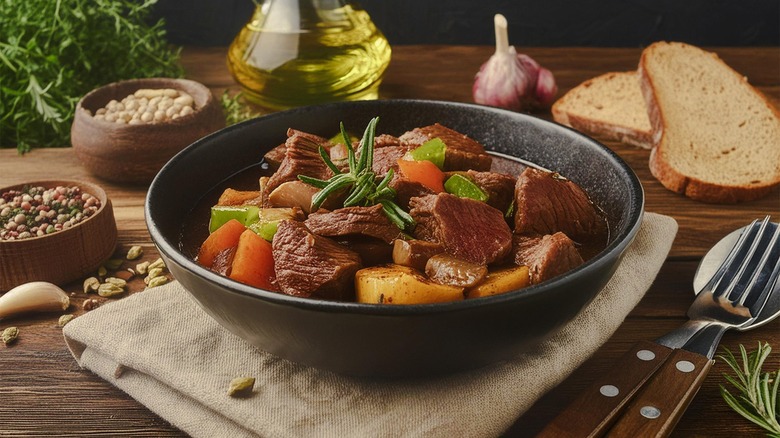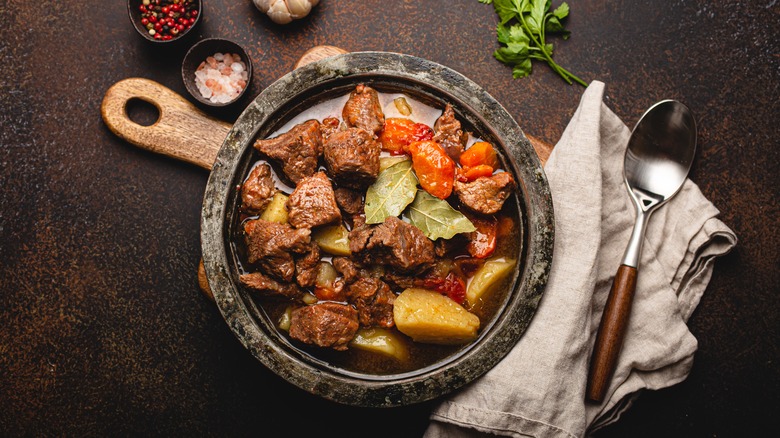How Long Your Beef Stew Needs To Cook For The Best Texture
To achieve the best possible texture for your beef stew, you need the find the right cut of meat, and prepare it low and slow. You want it to be tender enough to melt in your mouth, but not so soft that it falls apart before you can enjoy it. We spoke with Gail Simmons, from the City Harvest Share Lunch Fight Hunger event, to discuss how to achieve this ideal texture while keeping the recipe as hands-off as possible.
"It will always depend [on] the cut of meat as there is definitely variation," Simmons confirmed. "It takes about 2.5 hours for a tougher cut of beef that is used for stew to properly tenderize and break down its connective tissue, if cooked at a low simmer, loosely covered on the stovetop." Chuck and round are usually used for stew meat thanks to their lean marbling and meaty flavor. Chuck roast, in particular, is an especially affordable cut that is best for stew – it has just enough fat to stay tender for the lengthy cook time, but not so much that it ruins your stew's texture by becoming overly greasy.
Simmons was quick to point out that a slow cooker may require a bit more time, as the kitchen gadget typically operates at lower temperatures. While they're great for "set it and forget it" cooking, there are plenty of old-fashioned tricks to ensure your stew stays at the perfect temperature while it cooks in traditional cookware, as well.
Temperatures and tricks for slowly simmering beef stew
Beef stew is quite an old recipe, so even the most low-tech cook can tackle this recipe without the assistance of a slow cooker. Gail Simmons' tricks for managing temperatures to achieve the best stew texture are as simple as they are effective.
"If you don't have a slow cooker, you can start by using a Dutch oven on the stove, and bring the liquid/broth/seasonings and meat to a boil," the expert explained. "Once it starts to boil, reduce to a simmer, loosely cover and put in an oven heated to 300 degrees [Fahrenheit]." Even the most powerful oven at its highest setting would take quite a while to bring a pot to boil. Achieving the right temperature first, then allowing your oven to maintain it, is the best method when you want to keep a long, slow simmer going without constantly checking on it.
"Check the beef at around the 2 hour mark, add a little more time in 15-30 [minute] increments if it needs it," Simmons continued. "Beef pieces should be tender enough to cut with a spoon." If your beef has reached the perfect texture but your soup isn't quite there yet, use a common pantry staple for a quick fix. Potato flakes enrich your stew's taste without requiring a ton of stirring that could possibly break your perfectly tender meat and veggies, plus you don't have to worry about clumps of cornstarch or flour sabotaging your meal's perfect texture.


